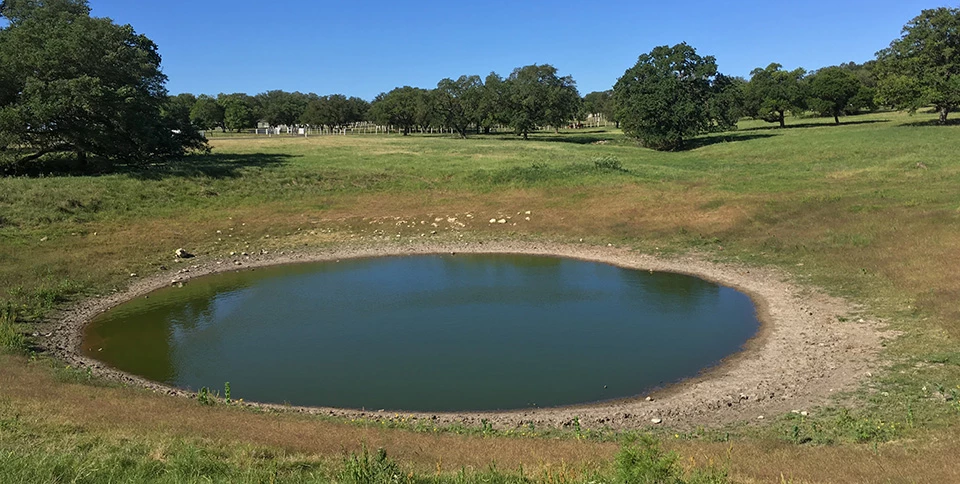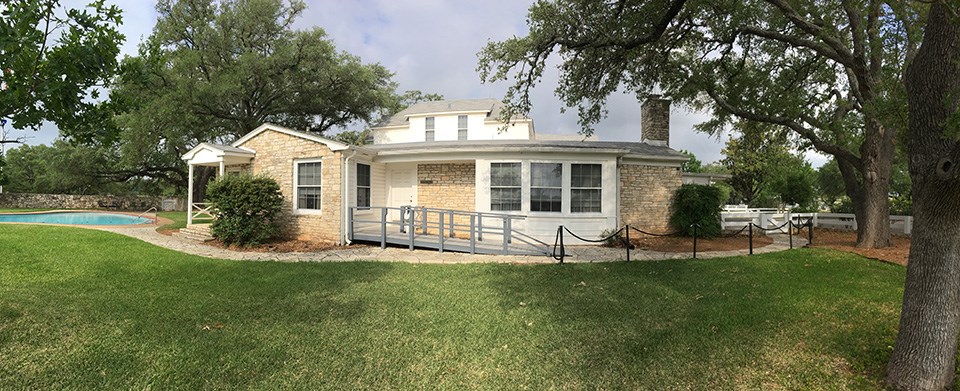"I guess every person feels a part of the place where he was born."
Article
Of Soil and Water: Life on the LBJ Ranch
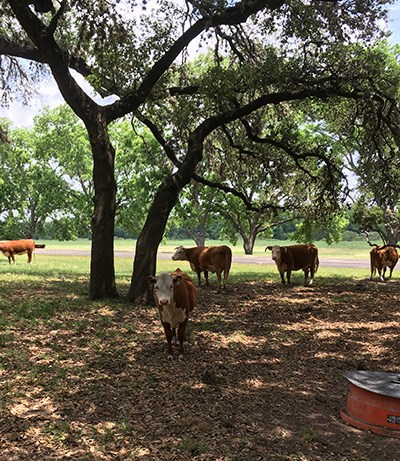
NPS Photo
This lifelong connection to place is evident at the LBJ Ranch, part of the Lyndon B. Johnson National Historical Park to the west of Austin, Texas. The cultural landscape contains features representing the ancestry, life, and legacy of the 36th President of the United States.
LBJ’s relationship to this south-central Texas landscape begins when his grandparents first settled here, and continues through his birth, boyhood, political career, retirement, and finally burial in the family cemetery.
A Landscape History
Long before German farmers and Anglo-American ranchers settled in the Texas Hill Country, Native Americans inhabited the region. Archaic hunter-gatherer cultures and, more recently, tribes that included the Tonkawa, Apache, and Comanche shaped earlier cultural traditions and land use.
The first record of agricultural use on the land where the Johnson family would settle dates to 1882, when Wilhelm Meier purchased the property. The Meier family was part of the wave of German immigrants that arrived into the Hill Country in the late 1800s, tranforming the landscape in terms of vernacular design and use.
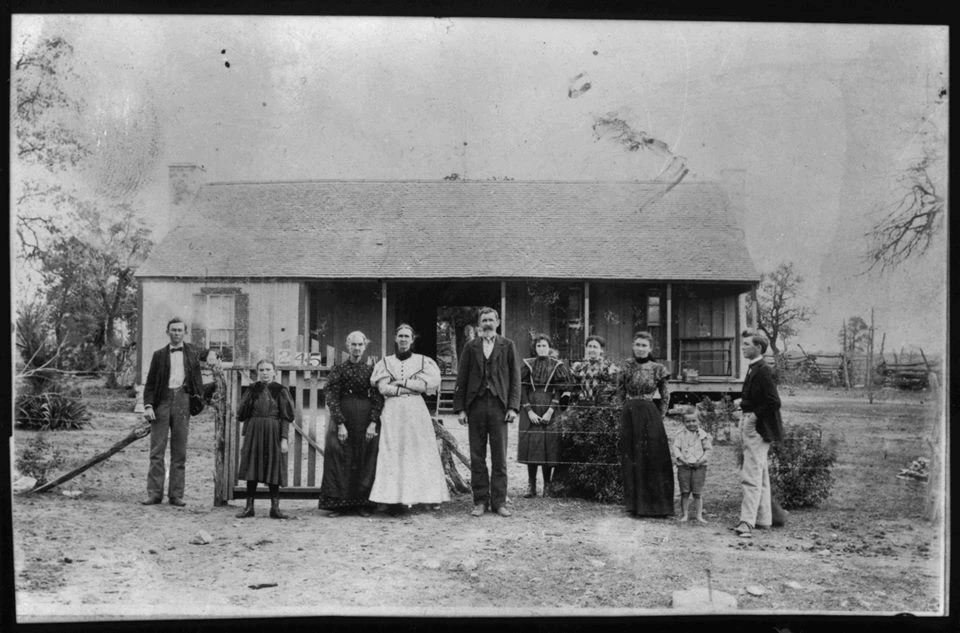
NPS Photo, date unknown
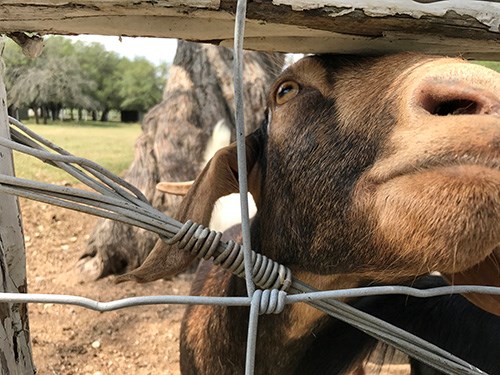
NPS Photo
The features found in different areas of the park are reminders of the multiple uses of the property. In addition to developing the property as a place to raise and show Hereford cattle, his political career also necessitated the construction of non-ranching features like an airstrip, security and communication features, and the expansion of the residence to accommodate guests.
A Texas Ranch
The selection of this location for settlement, the cycle of floods and droughts, and the features designed to support agricultural and domestic life on the ranch all indicate the vital role of water in shaping the ranch landscape.
This area has a long history of dramatic and unpredictable weather. Storms can bring flooding and winds, and drought is a reality of this Texas region. While these forces can be damaging, they also have shaped the character of the property. The Pedernales River that bisects the LBJ Ranch defines and directs natural systems. Periodic flooding has enriched the alluvial terrace with new soil, and native live oaks grow around the property.
Live oaks (Quercus virginiana) are scattered in the agricultural fields, casting shadows over the fields and protecting the cattle from the scorching Texas sunshine. As the sun crawls through the hot summer sky, the herd circulates between sunny, open areas of the river bottoms to the shady areas under the oaks.
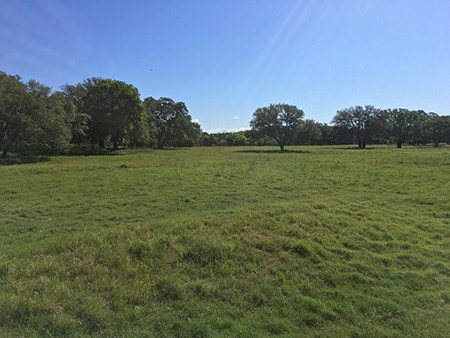
NPS Photo
Of course, ranching methods and tools have changed from the time of the early German immigrants, to LBJ’s tenure, to today’s National Park Service management. The ranch operation continues to reflect the period when it was under LBJ’s ownership, although some of the features are used primarily for interpretation and the NPS has decreased the intensive use of agrochemicals.
In a eulogy for Lyndon B. Johnson delivered to a joint session of the 63rd Texas Legislature on January 25, 1973, U.S. Court of Appeals Judge Homer Thornberry said, “In the rugged Hill Country just west of here he developed the strength of character, the courage, the vision, the sense of realism, the compassion which enabled him to perform with effectiveness the tasks of his office."
A Living Reminder
Lyndon and Lady Bird Johnson were actively interested in experimental techniques directed at sustaining the health and conservation of the site, and the development of sustainable operations by the National Park Service continues to be characteristic of historic land use at the ranch.
Today, the landscape is a living reminder of the ways that Lyndon B. Johnson was connected to this Texas landscape in his political and personal life. To recall the words of LBJ himself, “…every person feels a part of the place where he was born.”
Cultural Landscape Inventory Reports for Lyndon B. Johnson National Historical Park
Last updated: May 20, 2019

